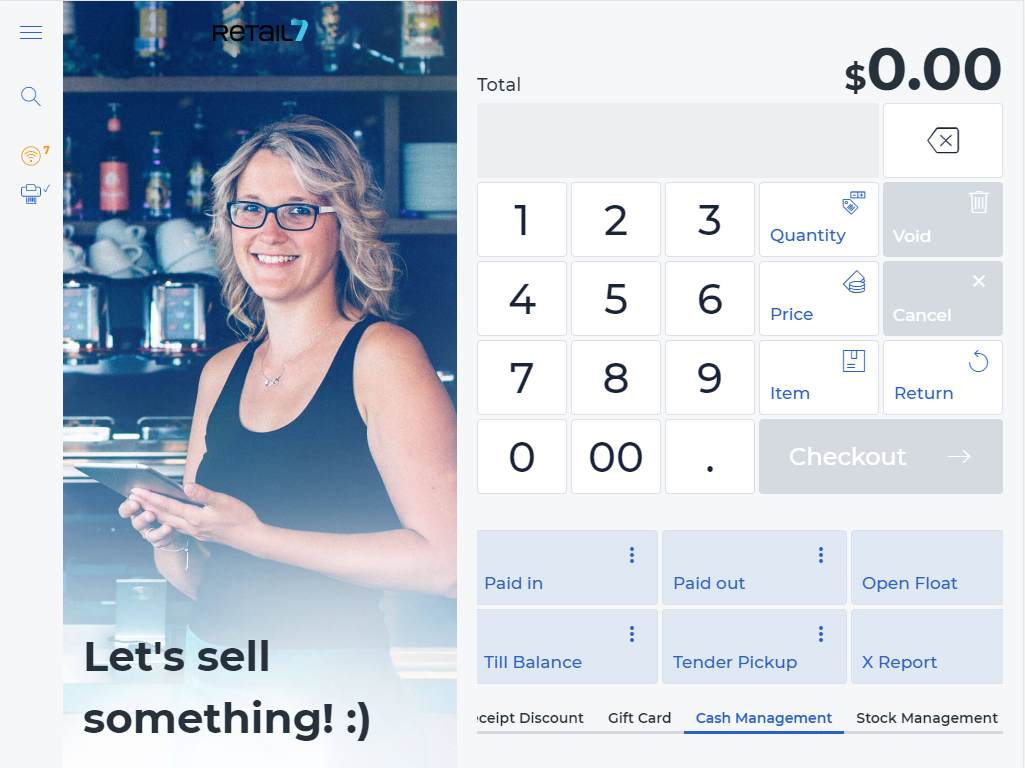11.6.1 Basics
The basic task of cash management is to secure cash. The RETAIL7 POS system supports this with various functionalities. Deposits and withdrawals can be made and the corresponding reports created, which can be viewed at any time via the Management Console. This way, the RETAIL7 system registers which type of deposit or withdrawal has been made, and a clear separation of e.g. opening balance, addition of change as well as disbursements is guaranteed. All transactions related to cash management are only possible if a reason is given. This enables complete tracking at any time.
11.6.1.1 X-Report
An X-report can be run at any time. All transaction-relevant data is summarized here. These can then be viewed in the Management Console. The X-report thus does not conclude the day, but summarizes an interim status, so it is possible to create more than one X-Report per day. When the Z-report is run at the end of the day, the total on the Z-report is equal to all the data summarized on the X-reports previously. For more information, see the X-Report section.
11.6.1.2 Z-Report
The Z-Report is the conclusion of a day. All transaction-relevant data of the entire day is summarized here. This overview can be viewed at any time in the Management Console. A new Z-report can only be created when new transaction data is received in the POS system. This is regularly done on the next working day. The Z-report contains all data from the created X-report(s). Moreover, the creation of an X-report is not an obligation, but serves as an interim report. On the basis of this report, it is possible to get an overview of the cash management during the current business day. For more information, please refer to the Z-Report section.
11.6.1.3 Store closing
With this function, the day is completed at the cash register. Thus, the next transaction will not start until the next working day. Then a Z-report is generated, which summarizes the data recorded between the present time and the last Z-report. Accordingly, the last report is generated by the system the day before. This means that all the tills in the store have been closed. For detailed information, see the Store closing section.
In the Management Console under Menu → Reports → Store Closing, the closing can be downloaded as a PDF and then saved locally or printed out.
11.6.1.4 Paid in
With this function it is possible to make a deposit into the drawer independently, for example, of the initial balance. This operation can be performed only by specifying a reason. Thus, no unauthorized person can deposit cash into the drawer. This amount is also registered in the X or Z report. For more information, see the Deposit section.
11.6.1.5 Paid out
This function can be used to withdraw cash from the drawer by specifying a reason. Without a reason, no cash can be taken from the drawer at this point. This function should therefore be executed with care so that no unauthorized persons can steal money. This amount is also registered in the X or Z report. For more information, refer to the Payout section.
11.6.1.6 Initial inventory
This sum is used to indicate how much money is in the drawer at the beginning of the day. The amount is registered in the system as the initial balance and is independent of the other amounts that are paid in or out. This value must be specified again if another drawer is connected to the cash register during the day. This amount is also registered in the X or Z report. For more information, see the section Initial inventory.
11.6.1.7 Open float
This function can be used to fill the drawer with change. It can be the case that the coinage is all, but change must be given to the customers. In this case, register the amount as change in the system. This amount is also registered in the X or Z report. For more information, see the section Adding change.
11.6.1.8 Till balance
Here, manually count the cash in the drawer and enter the value into the system. The system then checks whether the manual value and the digital value, which is determined on the basis of the registered transactions, match. This means that there is always the certainty that the user has not miscounted. This amount is also registered in the X or Z report. For more information, see the Counting money section.
11.6.1.9 Skimming
Skimming involves exceeding a threshold value of cash. Cash is then skimmed from the cash register to compensate for the value. The amount of cash is registered in the system so that it is always possible to trace how much revenue has been generated. This amount is also registered in the X or Z report. For more information, see the Absorption section.
